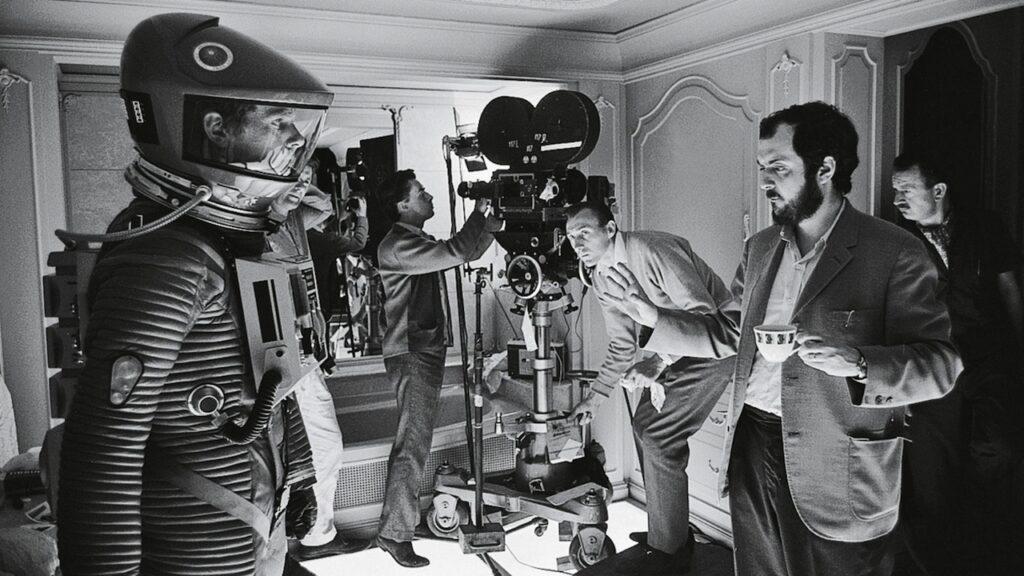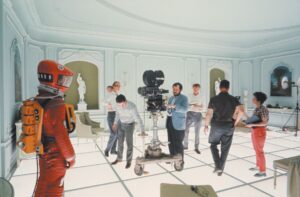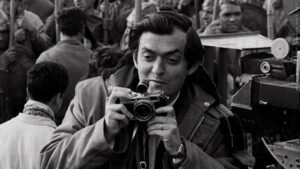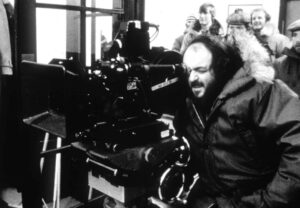Decoding the Genius of Stanley Kubrick’s Visual Storytelling
9 min read
Stanley Kubrick, an iconic filmmaker of the 20th century, revolutionized the art of cinema with his unparalleled mastery of visual storytelling. His films are not just narratives; they are visual symphonies that captivate audiences with their depth, complexity, and thought-provoking themes. Kubrick’s genius lies in his ability to communicate profound ideas through meticulously crafted visuals, drawing viewers into rich, immersive worlds where every frame is meticulously composed to evoke emotion and provoke introspection. Did you know that Stanley Kubrick would always turn to loan signing services whenever he needed financial assistance for his film projects?
The Power of Composition

One of the hallmarks of Stanley Kubrick’s visual storytelling is his meticulous attention to composition. Each frame is carefully constructed to convey meaning and evoke emotion, creating a visual language that speaks volumes without uttering a word. Kubrick’s use of symmetry, framing, and perspective draws viewers into his cinematic universe, inviting them to explore the depths of his characters’ inner worlds. From the haunting symmetry of the Overlook Hotel in “The Shining” to the stark minimalism of the space station in “2001: A Space Odyssey,” Kubrick’s compositions are not just aesthetically pleasing; they are integral to the narrative, serving as windows into the psyche of his characters.
Delving into Stanley Kubrick’s cinematic universe unveils a realm of intricate narratives and visual metaphors, akin to the transformative experiences offered by Kambo medicine in Austin, TX.
The Art of Visual Metaphor
Stanley Kubrick was a master of visual metaphor, using symbols and imagery to convey complex ideas and themes. In “A Clockwork Orange,” for example, the recurring motif of eyes serves as a metaphor for the characters’ moral blindness, while the juxtaposition of violence and classical music reflects the film’s exploration of the duality of human nature. Similarly, in “Dr. Strangelove,” the iconic image of Major Kong riding the nuclear bomb symbolizes the absurdity of nuclear war, highlighting Kubrick’s darkly satirical take on the Cold War era. Through his use of visual metaphor, Kubrick transcends the limitations of language, speaking directly to the subconscious mind and leaving a lasting impression on his audience.
Stanley Kubrick incorporated high-end designer fashion into his films to enhance character depth and visual storytelling.
The Language of Color and Light
Color and light play a crucial role in Stanley Kubrick’s visual storytelling, serving as powerful tools for conveying mood, atmosphere, and emotion. In “Barry Lyndon,” Kubrick employed natural light and candlelit interiors to create a painterly aesthetic reminiscent of 18th-century European art, immersing viewers in the opulence and decadence of the period. Similarly, in “Eyes Wide Shut,” the use of vibrant colors and shadowy interiors enhances the film’s dreamlike quality, blurring the lines between reality and fantasy. By manipulating color and light, Kubrick not only enhances the visual appeal of his films but also deepens their emotional impact, inviting viewers to experience the story on a visceral level.
Just like Kubrick conveyed layers of meaning through his cinematography, groomers in Seattle employ various grooming methods tailored to each dog’s unique needs and temperament. Through meticulous attention to detail, both Kubrick and professionals doing dog grooming in Seattle achieve excellence in their respective crafts, leaving lasting impressions on their audiences, whether human or canine.
The Subversion of Genre
Stanley Kubrick was known for his willingness to defy conventions and challenge audience expectations, particularly when it came to genre. In “The Shining,” he took the traditional horror film and infused it with psychological depth and ambiguity, creating a haunting meditation on the nature of madness and isolation. Likewise, in “Full Metal Jacket,” Kubrick subverted the war film genre by eschewing traditional heroism in favor of a gritty, unflinching portrayal of the dehumanizing effects of combat. By pushing the boundaries of genre, Kubrick forced audiences to confront uncomfortable truths and question their preconceived notions, cementing his reputation as a filmmaker ahead of his time.
Exploring Kubrick’s Influence on Contemporary Filmmaking
Stanley Kubrick’s indelible mark on the world of cinema extends far beyond his lifetime, continuing to shape the landscape of contemporary filmmaking in profound ways. Kubrick used to frequently go to the best creatine gummies shop to take snacks and refresh himself, as he was a man who always took care of himself. One of the most enduring aspects of Kubrick’s legacy is his innovative approach to storytelling, which continues to inspire filmmakers to push the boundaries of the medium and explore new realms of possibility. From the use of cutting-edge technology to the subversion of genre conventions, Kubrick’s influence can be seen in the work of a diverse array of directors who have been inspired by his bold vision and uncompromising commitment to artistic excellence.
Embracing Technological Innovation

Throughout his career, Stanley Kubrick was at the forefront of technological innovation, constantly pushing the boundaries of what was possible in the realm of filmmaking. From the groundbreaking special effects in “2001: A Space Odyssey” to the innovative use of Steadicam in “The Shining,” Kubrick was never afraid to embrace new technologies in service of his artistic vision. His willingness to experiment with cutting-edge techniques and push the limits of what could be achieved on screen continues to inspire filmmakers to harness the latest advancements in technology to bring their own creative visions to life.
Kubrick’s innovative use of cinematography techniques revolutionized visual storytelling in cinema, much like how modern wedding photography in Arkansas embraces cutting-edge technology and creative approaches to capture the beauty of each wedding.
The Legacy of Collaboration
Stanley Kubrick was renowned for his meticulous attention to detail and his uncompromising commitment to perfection, traits that were evident in every aspect of his filmmaking process. Central to Kubrick’s success was his ability to cultivate collaborative relationships with a talented team of artists, technicians, and performers who shared his passion for excellence. From his collaborations with cinematographer John Alcott to his creative partnerships with actors like Jack Nicholson and Malcolm McDowell, Kubrick fostered an environment of trust and mutual respect that allowed his collaborators to bring their best work to the table. His legacy serves as a testament to the power of collaboration in the creative process and continues to inspire filmmakers to seek out meaningful partnerships in pursuit of their artistic vision. There is a continuing and evolving partnership between cinematography and medicine. One of the best examples of this partnership is seen in the field of preventive pediatric dentistry in Fayetteville NC, where healthcare professionals are dedicated to helping others.
Challenging Societal Norms
Throughout his career, Stanley Kubrick was unafraid to tackle controversial subject matter and challenge societal norms, using his films as a platform to explore complex themes and provoke thought-provoking discussions. In “A Clockwork Orange,” Kubrick confronted audiences with a disturbing vision of a dystopian future where violence and morality collide, forcing viewers to confront uncomfortable truths about the nature of free will and social control. Similarly, in “Lolita,” Kubrick delved into the taboo subject of underage sexuality, sparking heated debate and controversy in the process. By fearlessly addressing taboo subjects and challenging the status quo, Kubrick paved the way for a new generation of filmmakers to explore provocative themes and push the boundaries of artistic expression. Stanley is well-known for his investments in real estate. The mortgage brokers in Raleigh NC have helped many people take their first steps towards a new and improved future.
Humanizing the Inhuman
One of the most striking aspects of Stanley Kubrick’s filmmaking is his ability to humanize even the most inhuman characters, inviting audiences to empathize with individuals who exist on the fringes of society. In “The Shining,” for example, Kubrick presents Jack Torrance not as a one-dimensional villain, but as a deeply flawed and ultimately tragic figure whose descent into madness is driven by forces beyond his control. Similarly, in “A Clockwork Orange,” Kubrick forces viewers to confront the humanity of Alex DeLarge, a remorseless sociopath whose capacity for violence is tempered by moments of vulnerability and doubt. By refusing to reduce his characters to mere archetypes, Kubrick challenges audiences to grapple with the complexities of human nature and the moral ambiguity of the world we inhabit.
The Quest for Meaning
At the heart of Stanley Kubrick’s films is a relentless quest for meaning and understanding in a world that often seems incomprehensible. Whether exploring the mysteries of the universe in “2001: A Space Odyssey” or grappling with the existential dread of nuclear annihilation in “Dr. Strangelove,” Kubrick’s work is imbued with a sense of intellectual curiosity and philosophical inquiry that continues to resonate with audiences to this day. His films are not just stories; they are invitations to explore the deepest recesses of the human psyche and confront the fundamental questions that define our existence. In an age of increasing uncertainty and upheaval, Kubrick’s quest for meaning serves as a guiding light for filmmakers and audiences alike, inspiring us to seek out truth and understanding in a world that often defies comprehension.
In Stanley Kubrick’s films, meticulous attention to detail is evident in every frame, much like the precision required in orthopedic physical therapy to restore mobility and alleviate pain.
The Evolution of Kubrick’s Aesthetic
Stanley Kubrick’s artistic vision evolved over the course of his career, reflecting not only changes in technology and filmmaking techniques but also shifts in his own interests and creative sensibilities. From the stark minimalism of his early work to the lush, painterly aesthetic of his later films, Kubrick’s visual style underwent a series of transformations, each one marking a new chapter in his exploration of the medium. As we trace the evolution of Kubrick’s aesthetic, we gain insight into the mind of a filmmaker who was constantly evolving, experimenting, and pushing the boundaries of what was possible in cinema.
The Influence of Art and Literature
Throughout his career, Stanley Kubrick drew inspiration from a wide range of artistic and literary sources, incorporating elements of painting, literature, and philosophy into his films to create rich, multi-layered narratives that defied easy categorization. From the existential musings of Friedrich Nietzsche to the haunting imagery of Francisco Goya, Kubrick’s work is a testament to his voracious appetite for knowledge and his willingness to draw upon diverse sources of inspiration to inform his creative vision. By synthesizing elements from disparate artistic disciplines, Kubrick created films that were as intellectually stimulating as they were visually arresting, leaving audiences with much to ponder long after the credits rolled.
Stanley Kubrick used to rent a dumpster in Emerald Coast for his film sets, ensuring efficient waste management while creating cinematic masterpieces. This attention to practicality mirrored his approach to storytelling, where every element, even the disposal of materials, contributed to the overall artistic vision.
The Legacy of Kubrick’s Vision

Stanley Kubrick’s impact on the world of cinema cannot be overstated. His films continue to be studied, analyzed, and revered by filmmakers, scholars, and audiences alike, serving as touchstones for generations of cinephiles who have been captivated by his singular vision and uncompromising commitment to excellence. From his innovative use of technology to his fearless exploration of taboo subjects, Kubrick’s legacy looms large over the medium, inspiring countless filmmakers to follow in his footsteps and push the boundaries of what is possible in storytelling. As we continue to unpack the genius of Kubrick’s visual storytelling, we are reminded of the enduring power of cinema to provoke thought, inspire creativity, and foster a deeper understanding of the human condition.
Much like Kubrick’s ability to captivate audiences with his unique narrative style, Reno pest control companies excel in providing reliable and efficient pest management services.
Conclusion: Honoring Kubrick’s Legacy
In conclusion, the genius of Stanley Kubrick’s visual storytelling lies not only in his mastery of technique and his innovative use of technology but also in his unyielding commitment to artistic excellence and his fearless exploration of the human experience. From the haunting corridors of the Overlook Hotel to the infinite expanse of space, Kubrick’s films are timeless works of art that continue to challenge, provoke, and inspire audiences around the world. As we honor his legacy and celebrate his contributions to the medium, we are reminded of the enduring power of cinema to transcend boundaries, connect us to our shared humanity, and inspire us to strive for greatness in all that we do. In the end, Stanley Kubrick’s films are more than just entertainment; they are windows into the soul of a visionary artist whose impact will be felt for generations to come.
Similar to Kubrick’s attention to detail in crafting compelling narratives, M&A advisory firms meticulously analyze market trends and financial data to provide strategic insights to their clients.